Through a little help from my friends I discovered yet ANOTHER diabetes friendly food preparation technique! Dry aging meats!
- Why I dry age meats
- Why experts dry age meats
Eating a meal plan that is ‘heavy’ in fatty meats, some might think I would get bored, let me assure you, “I DO NOT!” Here are links to my diabetes meal plan, my sample diabetes menu and diabetic friendly food posts.
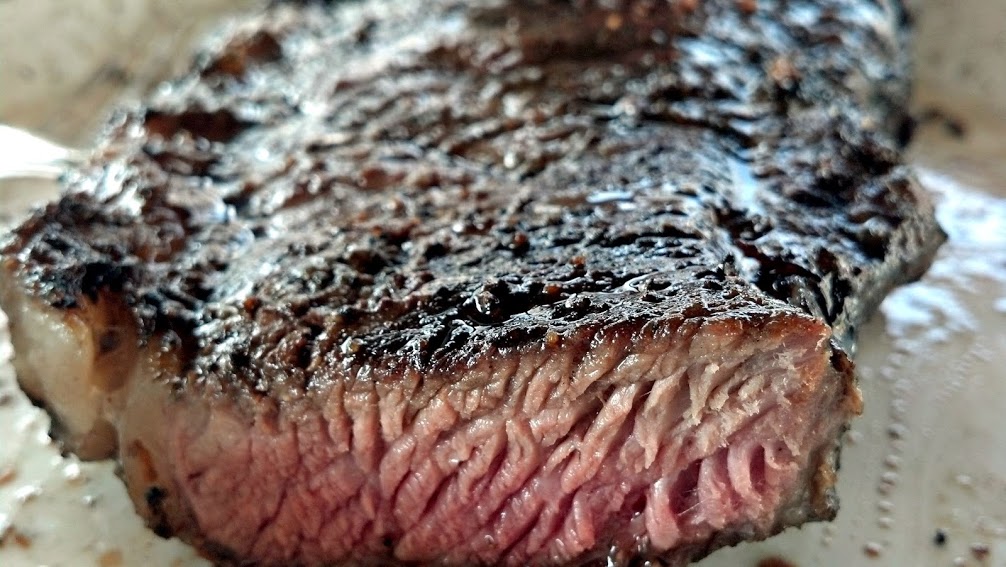
I do vary the cooking methods, preparations and the types of meats I eat. Enter Dry Aging, two friends have opened my mind to this way of ‘prepping’ meats, Lily Pink and MaryKate, my eating will never be the same! :)
Why Dry Aging
First we’ll talk about my reasons… and then the ‘official reasons’. :)
I revel in paleolithic discussions and hypothesizing. The vast majority of bacteria is beneficial to us and can help defend us against harmful bacteria. When I first heard of dry aging I was intrigued… my first thought was of the ‘bacterial’ action that might be involved.
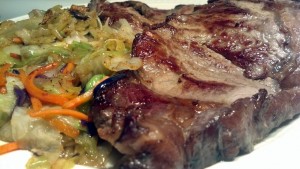
Too from a paleolithic standpoint, I knew that early man often killed animals and we did not have freezers to store our meats. The best we could hope for was a cool place to store the meat, it was possible we evolved and adapted to eat meats this way.
So I gave it a shot as a personal experiment… just to see what would happen. Wow was I rewarded.
I’ve never seen steaks so GORGEOUS and delicious! I post a lot of food pictures and dry aged steak pictures are by far much ‘prettier’ than freshly purchased and cooked meats.
Note: The longest I’ve stored meats in the refrigerator was 7 days.
Here is a picture of a roast I had dry-aging, along with several steaks I had sliced.
Why Dry Age?
This is the post I’ve shared the most on this topic, “The Science of Taste Or: Why Dry-Aged Meat is so Damned Delicious“. Here’s a quote,
… we can get our food to make itself more delicious, by treating it in a way that creates favorable conditions for the enzymes that are already in the food to work together in a certain fashion.
Enzymes are molecules that exist in foods-and in microbes intimately involved with food-that can transform those basic, bland building blocks. They’re nanocooks-the true molecular cooks. Dry-aging, ripening, and fermentation are all processes that take advantage of enzymes to make foods delicious before cooking.
Ok, when we dry-age we are allowing enzymes in the meat to work with bacteria to make it taste better… and more tender. But how?
What happens is that enzymes in the meat’s muscle cells begin to break down the meat’s proteins, fats, and glycogen—a carbohydrate—into amino acids, fatty acids, and sugars. One amino acid generated by dry-aging—the most important and flavorful one, in fact—is glutamate, which is part of MSG. other amino acids have flavors somewhat similar to MSG; others still are sweet.
Isn’t that COOL!!! The science of dry-aging … awesome stuff! There is more … of course.
Dry-aging beef also causes it to lose some of its moisture. Meat begins at about 75 percent water; after dry-aging, it may go down to somewhere around 70 percent. It doesn’t sound like much of a change, but what it means is that the flavors become more concentrated, and the tissue itself becomes more concentrated, too. Dry-aged meat is still juicy when you cook it, but the juices are even more delicious than usual.
Pure awesomeness!!! So you see… the deliciousness that is ‘dry-aged’ meat is not in your head, it’s REAL! There are more exotic ways of dry-aging meat … but all you really need is a refrigerator!
The picture below shows there is still plenty of moisture, I sliced off a steak from a roast. :) (click to enlarge)
How I Do It
I simply place an unused toaster oven rack on a plate see below, and place the meat on the rack. This allows air flow all around the meat. I do turn the meat once a day because the air flow on the side facing down is not as great as the side facing up.
In case you are wondering, yes this is how it actually looked. Often the fat will turn a reddish or dark pink color.
Typically I’ll cook the dry-aged meat in a black cast iron skillet in butter or bacon fat. Mmmm good!! I do NOT overcook my meats, typically 3-4 minutes per side depending on the thickness. Sometimes even less… a good quick searing is all I want. :)
Ciao.
PS – One Last Pic.
Lower Your Blood Sugar Naturally
If your blood sugars are elevated and you cannot achieve truly normal blood sugars with diet alone…
READ MY BOOK! How to Reduce Blood Sugars.
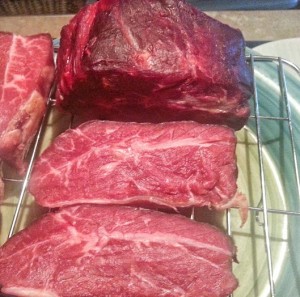
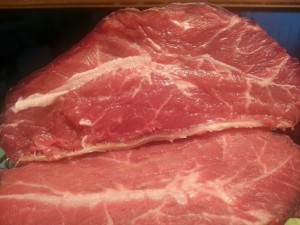
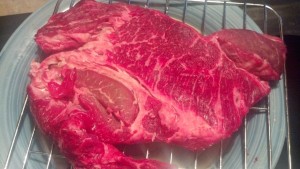
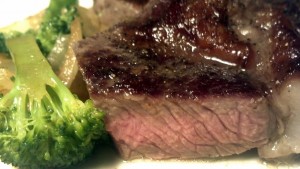
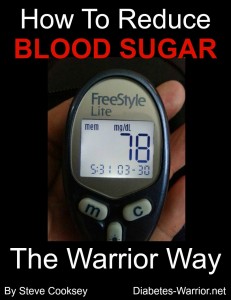
Pingback: Slow Roasting 101 the Warrior Way - Diabetes Warrior
Pingback: Slow Roasting 101 the Warrior Way - Diabetes type I Answers